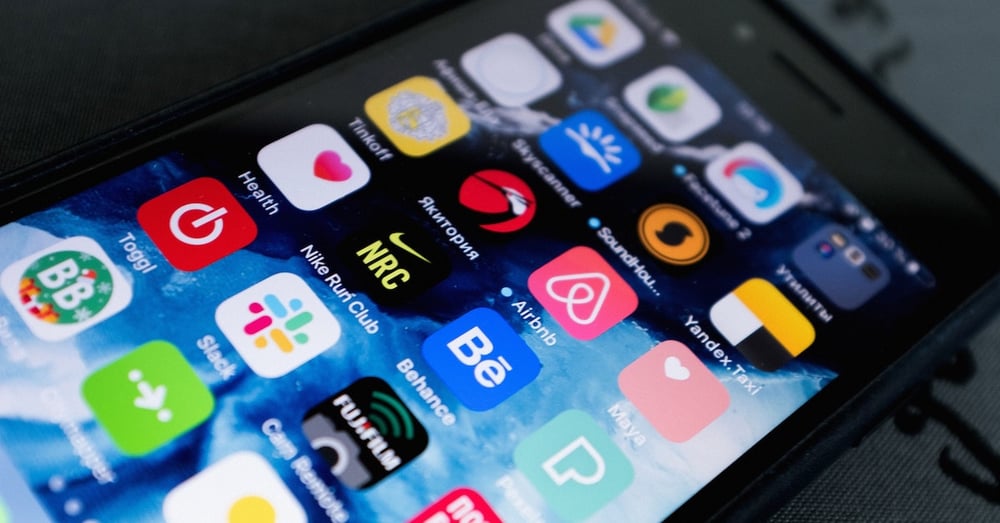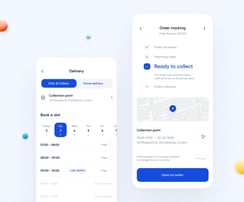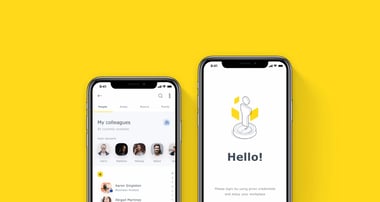Essential Mobile App Development Trends to Navigate 2024

This guide zeroes in on the pivotal technologies and approaches that will dominate the year—from 5G’s high-speed connectivity and AR/VR immersive experiences to AI-enabled personalization. Gain insight into these developments and steer your mobile strategy with confidence.
Key Takeaways
-
5G is significantly enhancing mobile app performance with increased speed, lower latency, and improved streaming, real-time data syncing, and IoT application capabilities.
-
Augmented Reality (AR) and Virtual Reality (VR) technologies are creating immersive experiences in retail, navigation, and education, reshaping user interactions and learning environments.
-
Artificial Intelligence (AI) is driving mobile app development with personalized user experiences, efficient chatbots, predictive analytics, and smart design while securing apps against cyber threats.
The Rise of 5G and Its Impact on Mobile Apps
The dawn of 5G technology is unleashing a new era in the mobile app industry. This ultra-fast and efficient network is offering unparalleled data transfer rates, setting the stage for drastic improvements in mobile app interactions. Imagine a mobile app that delivers up to 100 times faster speeds and a 10x decrease in latency compared to 4G. Sounds revolutionary, right? But the influence of 5G doesn’t stop at speed and efficiency—it’s driving significant advancements in streaming capabilities, real-time data syncing, and Internet of Things (IoT) applications.
Let’s uncover the details.
Enhanced Streaming Capabilities
Streaming has become a staple in our digital lives, whether it’s for watching viral videos, attending virtual meetings, or binging on favorite shows. But what if we told you that the era of buffering and low-resolution videos is nearing its end? Thanks to 5G, streaming at high resolutions like 4K and 8K is becoming a reality. This enhanced streaming capability supports high-fidelity video and audio files, meets growing user demands and revolutionizes content delivery.
Remember the last time you were frustrated over slow video loading times? With 5G, those days are history.
Real-Time Data Syncing
In our fast-paced world, being up-to-date is crucial—especially when it comes to multi-user and collaborative apps. Imagine working on a project with your team, and all participants have the most current information immediately. This is the power of real-time data syncing.
With 5G’s reduced latency and enhanced speeds, updates and synchronization across various platforms and devices happen more quickly than a blink of an eye. This ensures a seamless user experience, making collaboration more efficient and less time-consuming.
Proliferation of IoT Applications
As we nestle ourselves in the era of smart devices, the IoT market is on a massive growth trajectory. From smart homes to connected cars, IoT applications are becoming an integral part of our lives. The projected revenue from technology associated with IoT is expected to reach a whopping $1.6 trillion by 2025.
And guess what’s driving this growth? Yes, you guessed it right—5G! By enhancing connectivity and reducing latency, 5G is paving the way for a smarter, more connected future.
Innovations in AR and VR for Immersive Experiences
While 5G is revolutionizing connectivity, Augmented Reality (AR) and Virtual Reality (VR) are transforming our digital experiences. These technologies are pushing the boundaries of reality, offering immersive experiences right on our mobile screens. Ever thought of seeing how a new piece of furniture fits in your living room before buying it? Or navigating through a city with real-time direction overlays on your mobile screen? All of this is possible with AR and VR innovations.
Let’s dive deeper and see how these technologies are making waves in retail, navigation, and learning.
Virtual Try-Ons and Retail
Shopping from the comfort of your home is great, but what if you could try on that dress or see how that lipstick shade looks on you before making a purchase? Virtual try-ons in retail apps are making this possible. With AR, you can see how products would look on you in real time, increasing purchasing confidence and reducing product return rates.
Brands like Farfetch and Snapchat are already leveraging this technology, merging the online shopping experience with interactive social media engagement. It’s like having a fitting room on your mobile device!
AR Navigation Tools
Imagine walking down the street with real-time directions overlaid on the real world, guiding you to your destination. Sounds like science fiction, right? But it’s not. AR is reshaping navigation tools, enhancing our travel experience. Google Maps is leading the way with its ‘Live View’ feature that provides turn by turn directions in real-time on real-world imagery.
So, the next time you’re lost in a new city, AR can be your ultimate guide!
VR Learning and Training Modules
Education is no longer confined to classrooms, thanks to VR technology. With VR, students can experience and interact with fully digital environments, revolutionizing learning and training modules. The mobile learning market is anticipated to reach a value of $58.50 billion by 2029, with VR playing a significant role.
From immersing medical students in virtual surgeries to training pilots in simulated environments, VR is pushing the boundaries of education. The future of learning is here, and it’s virtual!
Embracing AI for Personalization and Efficiency
As we dive further into the digital era, Artificial Intelligence (AI) is shaping the future of mobile app development. AI can analyze user data to provide tailored experiences, offering personalized content, product, or service suggestions. But that’s not all; AI is also boosting efficiency in mobile app workflows by processing data and managing tasks more quickly than humans.
Let’s explore how AI is enhancing various app functionalities, from chatbots to predictive analytics and smart design.
AI-Driven Chatbots
In an era where instant gratification is the norm, AI-driven chatbots are transforming customer support. These chatbots understand and respond to user inquiries with contextually relevant information, providing efficient customer support and reducing operational costs.
Some chatbots even incorporate AR technologies for interactive experiences such as virtual product visualizations and personalized recommendations. So, the next time you chat with customer support, don’t be surprised if it’s an AI on the other end!
Predictive Analytics in User Experience
Have you ever wondered how your favorite streaming app always suggests shows that you end up loving? That’s the power of predictive analytics. By analyzing user behavior patterns, machine learning algorithms can predict future actions, informing the development of anticipatory app features. This not only personalizes user experiences but also boosts user engagement.
So, enjoy your personalized recommendations, courtesy of AI!
Smart Design with AI
In the realm of mobile app design, AI is proving to be a game-changer. By automating design processes, AI enables faster iterations, speeding up the development lifecycle. Plus, automated design processes ensure high levels of consistency across various app interfaces, enhancing user experiences.
So, the next time you admire an app’s intuitive design, remember, AI might have had a hand in it!
The Growth of Mobile Commerce and Payment Solutions
With smartphones becoming an essential part of our lives, mobile commerce and payment solutions are experiencing significant growth. From online shopping to mobile wallets, these solutions are changing the way we shop and transact. In fact, a whopping 72.9% of total ecommerce sales were made through mobile devices in 2021.
Let’s delve deeper into the evolution of mobile wallets, how ecommerce app development is being enhanced, and the robust security measures ensuring safe mobile transactions.
Evolution of Mobile Wallets
Gone are the days when we had to carry around bulky wallets filled with cash and cards. Mobile wallets like Apple Pay and Google Pay have become an integral part of our lives, with almost all smartphone users having access to mobile payment processing technology. The mobile wallet market is expected to reach $56.6 billion by 2026, and there’s potential for expansion into super apps that consolidate various services.
The future of payments is digital, and it’s right in your pocket!
Enhancing Ecommerce App Development
As online shopping becomes more prevalent, ecommerce apps are stepping up their game. They’re implementing predictive analytics to offer product suggestions that resonate with user preferences, based on their past purchases, browsing history, and search queries. This not only enhances the shopping experience but also increases user engagement, leading to higher conversion rates.
Security Measures in Mobile Payments
In this digital age, the security of our data is of utmost importance, especially when it comes to mobile payments. Advanced security measures like data encryption and access control are crucial in mobile payments, drastically lowering fraud risks. Plus, biometric authentication methods like fingerprint and facial recognition add an extra layer of security to app access.
Rest assured, your mobile transactions are in safe hands!
Cross-Platform Development and Its Dominance
In the quest to reach a larger audience, cross-platform development has emerged as a dominant trend in the mobile app industry. It enables businesses to develop apps that run on multiple mobile devices, reducing overall development time and costs. However, the benefits of cross-platform development don’t stop at cost-effectiveness.
Let’s explore how it offers unified codebases and efficient testing across devices.
Cost-Effective Strategies
With cross-platform development, businesses can:
-
Create a single application that runs on multiple platforms
-
Save significantly on development costs
-
Have a quicker launch in the market, giving businesses a competitive edge.
So, it’s not just about saving money; it’s about getting ahead of the game!
Unified Codebases
One of the biggest advantages of cross-platform development is the use of unified codebases. With platforms like:
-
Xamarin
-
Flutter
-
Kotlin Multiplatform
Developers can create mobile apps for both iOS and Android using a single codebase, catering to the needs of android users as well. By submitting their apps to the Apple App Store, this not only reduces costs but also speeds up the development cycle and ensures consistent user experiences across all platforms. In this ever-evolving mobile app development landscape, having a solid mobile app development strategy is highly beneficial.
It’s all about working smart, not hard!
Testing Across Devices
Developing an app is just half the battle; ensuring it offers a consistent experience across all devices is the other half. Cross-platform apps are rigorously tested to ensure a bug-free, consistent experience on various platforms.
This ensures that no matter what device a user has, they’ll have a smooth and seamless experience with your app.
Cloud Computing's Role in Mobile App Scalability
As businesses aim to scale their mobile apps, cloud computing has emerged as a game-changer. It provides the technical infrastructure for mobile app development, including servers, storage, and software, enhancing agility and efficiency. The cloud not only enables scalability but also offers benefits like enhanced data security and multi-platform accessibility.
Let’s delve deeper.
Cloud-Based Mobile App Advantages
Cloud-based mobile apps offer a host of advantages, including:
-
Reducing upfront infrastructure investment
-
Offering direct access through web browsers
-
Streamlining integration with databases and backend services
-
Optimizing data management
-
Enabling real-time updates
With the cloud, your app can reach new heights!
Data Security in the Cloud
Data is the new oil, and protecting it is paramount. Cloud platforms enhance mobile app security with features like data encryption and robust access control measures.
So, while your app scales with the cloud, it remains secure and protected.
Multi-Platform Accessibility
Imagine updating your app and having the updates available across all platforms in real-time. Cloud infrastructure facilitates this seamless synchronization, ensuring users always have access to the latest app features and security measures.
With the cloud, your app is everywhere, always!
Securing Mobile Apps Against Cyber Threats
In an age where cyber threats are a growing concern, securing mobile apps has never been more crucial. Protection measures like biometric authentication, end-to-end encryption, and regular security audits are essential in ensuring app safety.
Let’s uncover how these measures keep your app secure.
Biometric Authentication
As technology advances, so do authentication methods. Biometric authentication, which includes fingerprint scanning and facial recognition, offers secure user verification and fraud prevention. With biometric authentication, your app’s security is as unique as your users!
End-to-End Encryption
When it comes to data security, end-to-end encryption is the gold standard. It allows only the sender and intended recipients to access the content of a message, ensuring personal data is protected from unauthorized access.
With end-to-end encryption, your app’s communications stay confidential.
Regular Security Audits
Just like regular health check-ups are important for our well-being, regular security audits are crucial for an app’s health. They identify vulnerabilities and enhance protection against potential threats.
So, keep your app healthy with regular security audits!
The Surge of On-Demand Mobile Apps
In our fast-paced world, on-demand mobile apps are becoming increasingly popular in the mobile app market. These apps provide immediate access to goods and services right at our fingertips, revolutionizing various industries. From food delivery to ride-sharing, on-demand apps are making our lives easier and more convenient.
Let’s explore this trend more closely.
Convenience at Users' Fingertips
We live in a world where time is of the essence. And in this world, on-demand apps cater to our evolving expectations by offering services or products that meet the definition of ‘immediate’. These apps are all about saving time and making our lives easier.
Customized Service Offerings
One size doesn’t fit all, especially when it comes to user experiences. On-demand apps understand this and are investing in personalization strategies to offer tailored experiences that match app users’ preferences. So, whether it’s the type of food you like or the genre of music you prefer, these apps have got you covered!
Impact on Traditional Business Models
The rise of on-demand mobile apps is influencing traditional business models, pushing them to incorporate mobile technologies. From urban settings to suburban and rural areas, on-demand apps are changing the way businesses operate in the mobile app development industry, following the mobile app industry trends and mobile app development trend.
So, whether you’re a small business or a large corporation, it’s time to go on-demand!
Wearables and Their Influence on Mobile App Development
As technology becomes more personal, wearable devices are becoming increasingly popular. From smartwatches to fitness wristbands, these devices are influencing the way mobile apps are developed.
But how exactly are they affecting the industry? Let’s find out.
Health and Fitness Tracking
Health is wealth, and wearable devices are helping us maintain that wealth. With health and fitness tracking features, these devices are influencing our health and lifestyle habits. Some benefits of wearable devices include:
-
Keeping track of our daily steps
-
Monitoring our heart rate
-
Tracking our sleep patterns
-
Reminding us to stay active throughout the day
-
Providing personalized health insights and recommendations
Wearable devices are making health management easier than ever.
Standalone App Experiences on Wearables
Wearable devices aren’t just extensions of our smartphones; they’re becoming platforms in their own right. Standalone apps on wearable devices offer direct internet access without the need for data exchange with mobile apps.
This means you can check your emails, track your fitness, and even make payments right from your wrist!
Integration with Mobile Phones
While wearable devices are becoming more independent, they still work best when integrated with mobile phones. This integration enhances user experience and security, offering features like notifications, media controls, and voice commands.
So, whether you’re pairing your smartwatch with your phone or syncing your fitness data, integration is key!
Navigating the Foldable Smartphone Revolution
The smartphone market is no stranger to innovation, and foldable smartphones are the latest addition. These devices offer a larger screen area when unfolded and can be compacted for convenience when not in use.
How does this affect mobile app development? Can you expand on that? Let’s explore.
Design Challenges and Opportunities
Creating apps for foldable smartphones comes with its own set of challenges and opportunities. Designers must create interfaces that operate effectively with both one-handed and two-handed use, which varies with the device’s state being folded or unfolded. But with these challenges come opportunities for innovation and creativity.
Market Potential for Foldable Apps
With the rise of foldable smartphones, there’s a growing market for apps optimized for these devices. By 2023, the projected number of foldable phones shipped is expected to reach 50 million units. This opens up new opportunities for mobile app developers to innovate and optimize applications for these novel devices.
Adapting Existing Apps
With the advent of foldable smartphones, existing apps must adapt to ensure seamless user experiences during transitions between screen states. This involves ensuring screen continuity, multi-resume support, and adaptation to various screen aspect ratios as the device folds or unfolds.
The future is foldable, and apps must adapt to keep up!
Summary
As we navigate through the exciting world of mobile app development, we’ve seen the transformative power of 5G, the immersive experiences offered by AR and VR, and the personalization and efficiency brought by AI. We’ve also explored the growth of mobile commerce and payment solutions, the dominance of cross-platform development, the role of cloud computing in app scalability, the importance of securing apps against cyber threats, the surge of on-demand apps, the influence of wearables, and the revolution of foldable smartphones. As these trends continue to evolve, one thing is certain: the future of mobile app development is bright, and it’s right at our fingertips!
Frequently Asked Questions
What is the impact of 5G on mobile app development?
5G technology significantly improves the speed and efficiency of mobile app development by enhancing streaming capabilities, improving real-time data syncing, and enabling the proliferation of IoT applications.
How are AR and VR transforming mobile app experiences?
AR and VR are transforming mobile app experiences by providing immersive and practical applications in areas like retail, navigation, and learning and training modules.
How does AI enhance personalization and efficiency in mobile apps?
AI enhances personalization and efficiency in mobile apps by analyzing user data to offer tailored experiences and improving workflow efficiency through faster data processing and task management.
What are the benefits of cross-platform development?
Cross-platform development provides a consistent user experience, reduces development time and costs, and allows for efficient testing across different devices.
How are wearable devices influencing mobile app development?
Wearable devices are significantly influencing mobile app development by expanding into health and fitness tracking, standalone app experiences, and integration with mobile phones. This trend is shaping the future of mobile app development.



















